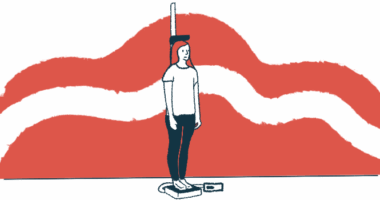Growth Hormone Safe, Beneficial for PWS Patients Under 2, Study Reports

Shutterstock
Growth hormone treatment in children younger than 2 with Prader-Willi syndrome (PWS) is safe, reduces body fat, and is linked with earlier ability to walk, a new study reports.
The study, “Safety and effectiveness of growth hormone therapy in infants with Prader-Willi syndrome younger than 2 years: a prospective study,” was published in the Journal of Pediatric Endocrinology and Metabolism.
Growth hormone treatment is a standard therapy for patients with PWS, improving the body’s overall composition by increasing muscle mass and decreasing body fat.
The guidelines established during the 2011 Growth Hormone Research Society Workshop state that treatment with growth hormone should begin once PWS children develop symptoms of obesity, typically detected around age 2. Obesity is often the result of hyperphagia (abnormally increased hunger), a distinct characteristic of PWS.
However, it remained unknown whether starting growth hormone therapy before age 2 was safe.
To answer this question, a team of researchers at Institut d’Investigació i Innovació Parc Taulí (I3PT), Universitat Autónoma de Barcelona, in Spain, conducted a prospective study (NCT02205450) with 14 toddlers (eight boys, six girls) diagnosed with PWS.
Participants began growth hormone treatment before age 2 — the median age for starting the treatment was 9.6 months.
The study’s primary goal was to assess the safety of growth hormone for at least two years after starting the treatment. Secondary goals included the impact of the treatment on body mass index (a measure of body fat), height, and the age when the toddlers started to walk.
Researchers detected no fatal adverse effects, and none of the toddlers developed metabolic conditions — hypothyroidism, hypercholesterolemia, or diabetes — previously reported in PWS patients treated with growth hormone. None of the children developed scoliosis, a condition in which the spine twists and curves to the side. Scoliosis can occur as an adverse effect of growth hormone treatment.
Furthermore, growth hormone treatment in PWS infants under age 2 led to improvements in body composition. Specifically, researchers saw a significant decrease in the skinfold thickness, a parameter correlated with body fat.
Researchers also saw that the toddlers who received growth hormone before the age of 15 months started walking significantly earlier than those who began the therapy after 15 months — 18 vs 36.6 months, respectively.
Based on the results, the team concluded that “[growth hormone] treatment in infants with PWS less than 2 years of age is safe and improved body composition,” and that “early use of GH therapy was associated with start of walking earlier.”
According to the researchers, further studies are needed to assess the effects of very early administration of growth hormone in childhood and adulthood.






